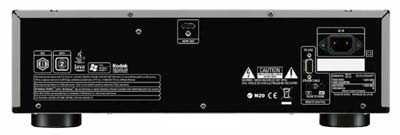Icon Film Distribution Australia has been releasing a number of interesting titles on Blu-ray, including Alpha Dog, Black Sheep and We Were Soldiers.
Plus 30 Days of Night. This last was shot in New Zealand and features Australian actress Melissa George. The Blu-ray includes an audio commentary in which, about 17 minutes into the movie, she is being gently ribbed about her Australian accent. At this point somebody tosses in a ‘put another shrimp on the barb-b’, and she rightly comments that in Australia we call them prawns. But she doesn’t seem to know how the saying came to be. In fact, this originated in a series of Australian tourism advertisements run in the United States in the early 1980s, fronted by Paul Hogan. Much to my surprise, there’s even a Wikipedia entry on it.
This is followed by Ms George enlightening us upon the sad history of Lindy Chamberlain, whose baby was thought to have been taken by dingo back in the 1980s. Ms George relates in the commentary: ‘You know she got out of prison twenty years later because the guy said “I saw what happened and had proof, and she went away for twenty years”‘ She shares this with a remarkable tone of certainty. Only problem is, the baby was taken in August 1980, Chamberlain was convicted of murder in October 1982. In February 1986 she was released after some of her baby’s clothes were found. There had been some disquiet raised over the soundness of her conviction over the previous few years. So, all in all, she served less than three and a half years, not twenty. Her conviction was formally voided in 1988.
Incidentally, Icon has this movie listed as having a duration of 108 minutes on the back cover. In fact its duration is 113 minutes (and 5 seconds if we want to get specific). Likewise, Black Sheep is listed as being 82 minutes, when it is actually 86, and We Were Soldiers as 133 minutes, when it is actually 139. This is an interesting reversal. PAL DVDs run four per cent faster than the original film, and NTSC DVDs. The reason is that each film frame is transferred to a PAL DVD frame. But there are 24 film frames per second, and 25 PAL DVD frames per second. This ensures superb picture quality, but a slightly quicker running speed.
Many PAL DVDs have been released over the years which incorrectly state the film duration rather than the DVD’s duration. Now this is being reversed. Blu-ray discs run at the same speed as the original movie (24 frames per second), so the original duration is what should be quoted.

 Earlier today I emailed
Earlier today I emailed